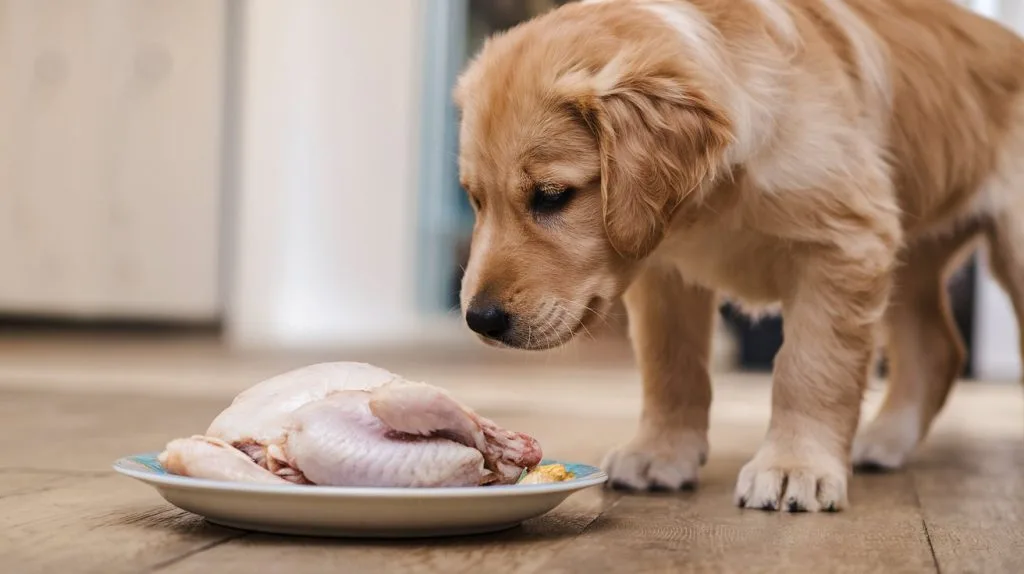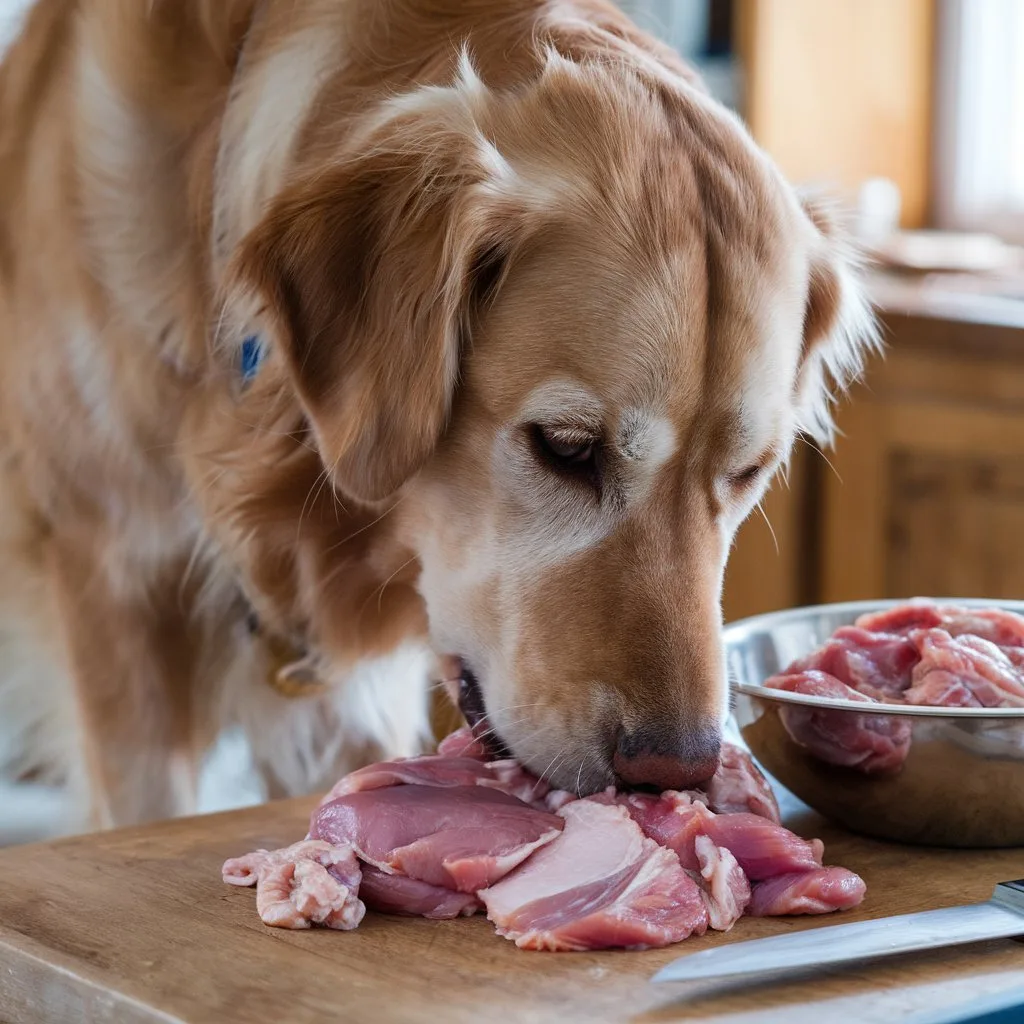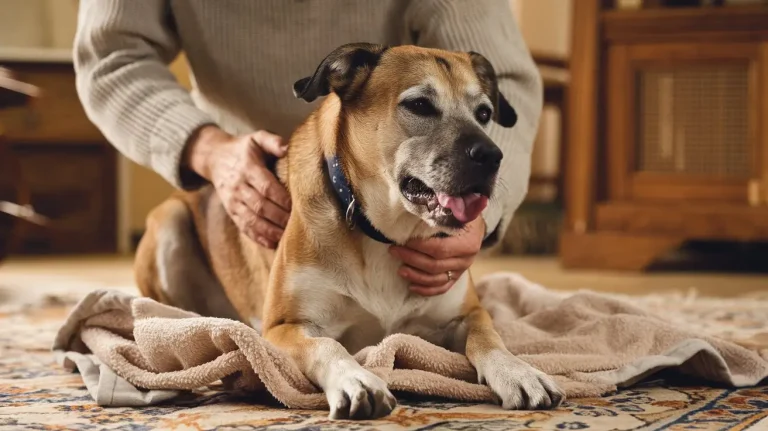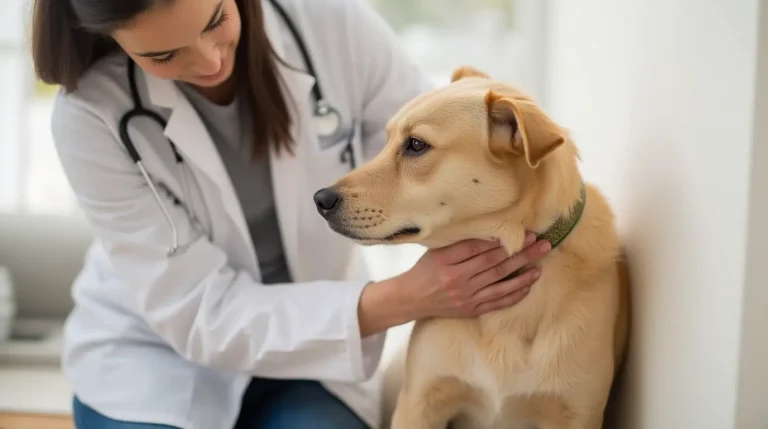Is Raw Chicken Safe for Dogs? in this article we look into the potential risks and benefits of feeding raw chicken to dogs. It examines the nutritional aspects of chicken for canine diets and explores safe ways to serve this popular poultry to pets. By the end, we will have a clearer understanding of whether raw chicken is safe for dogs and how to make informed decisions about our pet’s diet.
Table of Contents
The Risks of Feeding Raw Chicken to Dogs
Feeding raw chicken to dogs poses several health risks. Raw chicken can harbor dangerous bacteria such as Salmonella and E. coli, which can lead to gastrointestinal infections in both dogs and humans. Studies have shown that up to 20% of chicks may test positive for Salmonella. While dogs have a more robust digestive system than humans, they are not immune to these pathogens.
Dogs consuming raw chicken are more likely to shed harmful bacteria in their stool, potentially contaminating household surfaces. This poses a significant risk to human family members, especially young children, the elderly, and those with compromised immune systems.
Another concern is the potential for mechanical trauma to a dog’s digestive tract from consuming raw bones, particularly in smaller breeds. Large amounts of fat in raw chicken can also lead to pancreatitis, similar to the risks associated with dogs eating fatty foods during holidays.
Research has shown that 80% of bones and raw food (BARF) diet samples tested positive for Salmonella species, with 30% of dogs fed this diet shedding Salmonella in their stools. This highlights the increased risk of bacterial contamination associated with raw diets.
Nutritional Benefits of Chicken for Dogs
Chicken is a valuable protein source for dogs, offering numerous nutritional benefits. It’s rich in essential amino acids, which are crucial for muscle development and overall health. As a lean protein, chicken helps boost energy without significantly increasing caloric intake, making it suitable for less active or senior pets.
Chicken contains vital vitamins and minerals that support canine health. It’s a good source of selenium, which aids antioxidant function and thyroid metabolism. Vitamins B6 and B12 found in chicken facilitate enzyme function, glucose generation, and nervous system function. Zinc, another mineral present in chicken, plays a role in immune system and thyroid function.

Additionally, chicken provides phosphorus, which is essential for healthy bones and bone density. The protein in chicken breaks down into amino acids that are absorbed by the intestines and distributed throughout the body to repair muscle, build bone, and support major organs. This makes chicken a complete protein source, containing all essential amino acids necessary for good development in dogs.
Safe Ways to Serve Chicken to Dogs
To serve chicken safely to dogs, it’s crucial to prepare it correctly. Boneless, skinless chicken breasts or thighs are the best options. Boiling is a recommended cooking method. To boil chicken, place it in a pot, cover with water, and cook for 12 minutes. Check for doneness by cutting into the meat; it should not be pink or jelly-like. Allow the chicken to cool before serving to avoid burns. Cut the chicken into small, appropriately sized pieces for the dog to prevent choking. Boiled chicken can be used as a treat or part of regular meals. When feeding chicken to dogs, it’s important to avoid harmful ingredients like onions, garlic, or spices.
Is Raw Chicken Safe for Dogs? Conclusion
The debate surrounding “Is raw chicken safe for dogs?” highlights the need to balance nutritional benefits with potential health risks. While chicken offers valuable protein, vitamins, and minerals essential for canine health, serving it raw comes with significant dangers. The risk of bacterial contamination, particularly from pathogens like Salmonella and E. coli, poses threats not only to dogs but also to their human families. This underscores the importance of proper food handling and preparation to ensure pet safety.
To keep dogs healthy and safe, it’s crucial to cook chicken thoroughly before serving. Boiling boneless, skinless chicken and cutting it into appropriate sizes provides a nutritious meal or treat without the risks associated with raw meat. By following these guidelines, dog owners can ensure their furry friends enjoy the benefits of chicken while minimizing potential health hazards. In the end, informed decision-making about pet diets helps maintain the well-being of both dogs and their human companions.
FAQs
Can I safely feed my dog raw chicken?
Yes, feeding raw chicken to your dog can be beneficial and safe if the chicken is sourced from reliable suppliers and stored properly until it’s eaten. However, the question “Is raw chicken safe for dogs?” requires careful consideration, as it poses risks such as Salmonella contamination.
Should I choose cooked or raw chicken for my dog?
Cooked chicken is a reliable source of protein for dogs and can be added to their regular meals. However, many recommend against raw chicken due to risks like Salmonella or other bacterial infections, despite a growing trend towards raw food diets that include raw chicken and its bones.
What types of raw meat are safe for dogs to consume?
Dogs can thrive on a variety of meats such as chicken, turkey, and beef, which are commonly included in raw food diets. The choice of protein might depend on your dog’s specific health needs, with beef and pork being lower in sodium, making them suitable for some diets.
Is it okay to give my dog raw chicken wings?
Feeding dogs raw chicken wings has been linked to a risk of developing a disease known as polyradiculoneuritis, also referred to as APN, according to research from the University of Melbourne.





